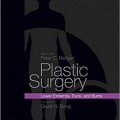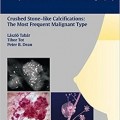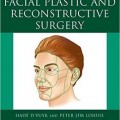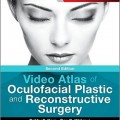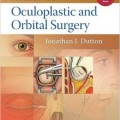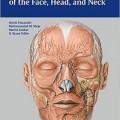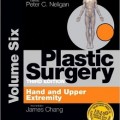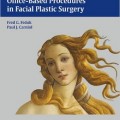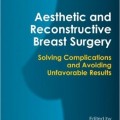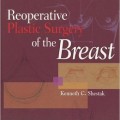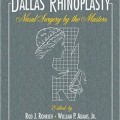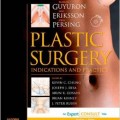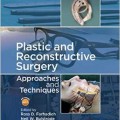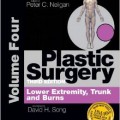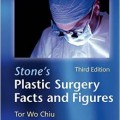دانلود کتاب تصویربرداری برای جراحی پلاستیک
Imaging for Plastic Surgery, 1ed
Preoperative imaging is increasingly being adopted for preoperative planning in plastic and reconstructive surgery. Accurate preoperative analysis can reduce the length of operations and maximize surgical design and dissection techniques.
Imaging for Plastic Surgery covers the techniques, applications, and potentialities of medical imaging technology in plastic and reconstructive surgery. Presenting state-of-the-art research on evolving imaging modalities, this cutting-edge text:
- Provides a practical introduction to imaging modalities that can be used during preoperative planning
- Addresses imaging principles of the face, head, neck, breast, trunk, and extremities
- Identifies the strengths and weaknesses of all available imaging modalities
- Demonstrates the added value of imaging in different clinical scenarios
Comprised of contributions from world-class experts in the field, Imaging for Plastic Surgery is an essential imaging resource for surgeons, radiologists, and patient care professionals.
Review
“… gathers all necessary information on the added value that each imaging modality can provide in most clinical scenarios found in plastic and reconstructive surgery. … Starting with an introduction to imaging modalities that can be used during preoperative planning of plastic and reconstructive surgery, the book further comprises sections that compile the essentials of imaging for the reconstruction of the face, head and neck, breast, abdomen, and upper and lower extremities. … Imaging for Plastic Surgery has the potential to engage not only plastic surgeons, but also professionals that actively participate in patient care. This can easily be the manual of many radiology and plastic surgery residents, in which they will be able to find all necessary information about what imaging can add to their next surgery. … Imaging for Plastic Surgery goes beyond the traditional use of imaging in medicine and deals with a novel clinical application of non-invasive imaging in the surgical field. Image-based accurate preoperative assessment of potential surgical strategies and techniques will undoubtedly result in better patient outcome and optimization of resources. This book comprises the essential knowledge about what every available imaging modality can offer and emphasizes their strengths and weaknesses. Furthermore, most relevant principles comprehending imaging and surgical procedures are thoroughly presented in this book. Readers will find in Imaging for Plastic Surgery a clear path to follow when considering the potential benefit of using imaging techniques for preoperative planning of almost every surgical procedure in the field of plastic and reconstructive surgery.”
―Gorka Bastarrika, University of Toronto and Sunnybrook Health Sciences Centre, Toronto, Ontario, Canada
“Registrars and consultants alike will find this book an excellent reference text to learn more about the radiographic tests we order and to make sure we are up to date with the new technologies now offered by our colleagues. Technology is rapidly expanding and new imaging techniques allow us to obtain a much better preoperative assessment for planning of the operative procedure. This text clearly defines the roles of these newer tests and [defines] which [tests] are the most appropriate to be ordered.”
―Patricia Terrill, Peninsula Health, Frankston, Victoria, Australia
About the Author
Luca Saba works at the Azienda Ospedaliero Universitaria (AOU) of Cagliari, Italy. His research is focused on neuroradiology, multi-detector-row computed tomography, magnetic resonance, ultrasound, and diagnostic in vascular sciences. Widely published in numerous peer-reviewed journals, he has edited 5 books, written 7 book chapters, presented more than 400 papers in National and International Congress (RSNA, ESGAR, ECR, ISR, AOCR, AINR, JRS, SIRM, AINR), and won 6 scientific and extracurricular awards. He is a member of the Italian Society of Radiology (SIRM), European Society of Radiology (ESR), Radiological Society of North America (RSNA), American Roentgen Ray Society (ARRS), and European Society of Neuroradiology (ESNR).
Warren M. Rozen combines clinical practice in plastic and reconstructive surgery with translational research as an assistant professor at Monash University, Clayton, Victoria, Australia. He holds an MBBS, PGDipSurgAnat, BMedSc, and Ph.D from the University of Melbourne, Parkville, Australia, and an MD from James Cook University, Townsville, Queensland, Australia. Widely published and a popular invited keynote and guest speaker, he is the senior author and/or editor of 20 textbooks in reconstructive surgery and the recipient of more than 60 awards for his work. He holds editorial board positions on 9 international journals including the Annals of Plastic Surgery and Microsurgery and Journal of Reconstructive Microsurgery.
Alberto Alonso-Burgos, MD, Ph.D, is a consultant radiologist in the Vascular and Interventional Radiology Unit at University Hospital Fundación Jiménez Díaz, Madrid, Spain. He completed all his medical training (MD 2003, Ph.D 2009, and diagnostic radiology residency 2008) at the University of Navarra and Clinic University of Navarra, Pamplona, Spain. His research has been focused on CT and MRI angiography for reconstructive surgery and preoperative 3D planning as well as oncologic interventional radiology. He has published more than 25 papers and 10 book chapters, and has edited textbooks including this first general imaging text for reconstructive plastic surgery.
Prof. Diego Ribuffo is a European board-certified plastic surgeon, and combines clinical practice with teaching and research at Sapienza University in Rome, Italy. His main clinical interests are reconstructive microsurgery and breast surgery. He has authored more than 200 publications, 2 books, and has given more than 100 presentations at national and international meetings. He has won several scientific prizes, and is on the editorial board of two international journals. After completing two fellowships in Atlanta and Melbourne, and being associate professor for eight years at Cagliari University, he is now back in his home university, where he currently serves as associate professor in plastic surgery in the Department of Surgery “P Valdoni”.
Contents
Chapter 1 Computed Tomography
Chapter 2 MRI Physics Principles
Chapter 3 Diagnostic Ultrasound
Chapter 4 Nuclear Medicine
Chapter 5 Mammography
Chapter 6 PET-CT in Oncology
Chapter 7 Sentinel Node Biopsy: An Evolution of the Science and Surgical Principles
Chapter 8 Free Flap Revascularisation Process
Chapter 9 Application of Virtual 3D Plastic Surgery
Chapter 10 Digital Thermographic Photography for Preoperative Perforator Mapping
Chapter 11 Stereotactic Image-Guided Surgery
Chapter 12 Lymphatics: Anatomy, Mapping, and Evolving Imaging Technologies
Chapter 13 Vascular Anomalies in Children: Tumours and Vascular Malformations
Chapter 14 Imaging and Surgical Principles for Maxillary Reconstruction
Chapter 15 Imaging for Jaw Reconstruction
Chapter 16 Imaging in Surgical Strategies for Facial Reconstruction
Chapter 17 Imaging and Surgical Strategies for Cutaneous Neoplasm of the Scalp
Chapter 18 Surgical Strategies and Imaging for Regional Flaps in the Head and Neck
Chapter 19 Imaging for Recipient Vessels of the Head and Neck for Microvascular Transplantation
Chapter 20 Imaging and Surgical Principles for TRAM (pTRAM) Flap
Chapter 21 Angio-CT Imaging of Deep Inferior Epigastric Artery and Deep Superior Epigastric Artery Perforators
Chapter 22 MR Imaging of Deep Inferior Epigastric Artery and Deep Superior Epigastric Artery Perforators
Chapter 23 Surgical Principles of Deep Inferior Epigastric Artery and Deep Superior Epigastric Artery Perforator Flap
Chapter 24 Imaging and Surgical Principles of the Superficial Inferior Epigastric Artery Flap
Chapter 25 Surgical Principles and Breast Imaging and Monitoring after Autologous Fat Transfer
Chapter 26 Surgical Principles and Imaging of Breast Implants and Their Follow-Up
Chapter 27 Lymphatic Imaging of the Breast: Evolving Technologies and the Future
Chapter 28 Breast Imaging for Aesthetic and Reconstructive Plastic Surgery
Chapter 29 Imaging for Incisional Median Abdominal Wall Hernias
Chapter 30 Imaging and Surgical Principles of Perforator Flaps of the Trunk
Chapter 31 Phalloplasty in Female-to-Male Sex Reassignment Surgery
Chapter 32 Imaging and Surgical Principles of the Gluteal Arteries and Perforator Flaps
Chapter 33 Imaging and Surgical Principles of Anterolateral Thigh Perforator Flap
Chapter 34 Imaging and Surgical Principles of Anteromedial Thigh Perforator Flaps
Chapter 35 Imaging and Surgical Principles for Tensor Fascia Lata Flap
Chapter 36 Surgical Principles of Deep Circumflex Iliac Artery
Chapter 37 Imaging and Surgical Principles of the Propeller and Perforator Flaps of the Lower Limb
Chapter 38 Lymphoscintigraphy for Extremities’ Oedemas and for Sentinel Lymph Node
Chapter 39 Nuclear Medicine as an Aid to Minimally Invasive Surgery, with Emphasis
Chapter 40 Preoperative Imaging for Reconstruction of the Lower Extremities
Chapter 41 Imaging and Surgical Principles in Hand Surgery
Chapter 42 Imaging and Surgical Principles of Osteomyelitis and Pressure Ulcers
Chapter 43 Image Guided 3D Printing and Haptic Modelling in Plastic Surgery















